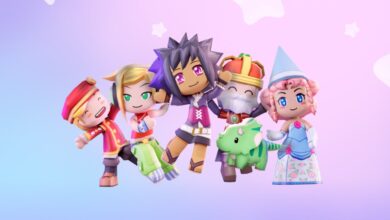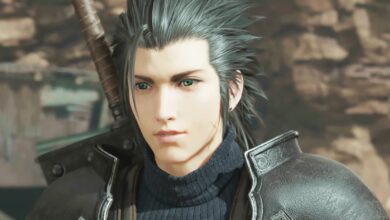How the classic RPG was improved for its PS5 launch – PlayStation.Blog

The launch of Dragon Quest III HD-2D Remake is fast approaching on November 14. We had the opportunity to sit down with the game’s producer, Masaaki Hayasaka, to chat about this stunning remake delivers the iconic masterpiece in HD- 2D format.
Masaaki Hayasaka
Producer, Dragon Quest III HD-2D Remake
How the HD-2D graphics bring out the full potential of this classic classic
PlayStation Blog: HD-2D has become much more popular since games like Octopath Traveler. What are some unique characteristics of this visual style?
In short, HD-2D is a visual style that combines pixelated characters with 3D backgrounds. Personally, I think this style works better in classic titles. When the original game first launched, players traveled around the world while imagining how beautiful the landscapes must be. The HD-2D truly brings that world to life.
Even though the game uses HD-2D, it is still instantly recognizable as Dragon Quest III. What do you think are the most important aspects needed to achieve the iconic Dragon Quest style?
The most obvious is the color palette. The Dragon Quest games are characterized by rich, vibrant colors, so we aimed to fully showcase that in the remake. If you compare the original game and the HD-2D remake side by side, the graphics will look completely different. The color palette is still similar though so there won’t be anything different from what OG players remember.

Built in parallel with Yuji Horii
What kinds of discussions did you have with Yuji Horii (creator of the Dragon Quest series) during development?
We connect regularly from the early stages of planning until the end of the development process. We exchanged a lot of details. We discussed everything from new features like Monster Arenas and additional narrative plots, to the balance of the game’s battles and even the size of character pixels.
Did you make any changes based on Yuji Horii’s suggestions?
He made a comment about blurring the game’s background, and I found that particularly memorable. Blurring the background in games is often called depth of field, which is a technique also used in photography. In HD-2D, depth of field is extremely important. We’ve had experience working on HD-2D games before, so we think we’ve mastered the feeling of implementing background blur. However, when we showed it to Horii-san, he said the blurriness was too strong and it made him feel like there was something wrong with his eyes. He then asked us to return to intensity. In a positive way, we were quite shocked by his offer from a player’s perspective. However, this change as a result makes Dragon Quest III stand out from other HD-2D titles, so his recommendation is correct.
So different games take advantage of HD-2D in different ways?
Absolute. The only thing all HD-2D titles have in common is that they place pixelated characters in a 3D world. Otherwise, each title is completely unique. For example, Octopath Traveler also incorporates pixels in the background, but Dragon Quest III does not. The character’s body proportions and pixel dimensions also vary depending on the title. Dragon Quest III is the first HD-2D title to incorporate a world map where players can actually roam around.
Is the distance between towns the same as before?
The layout of the buildings is exactly the same, but the map scale and distances have been changed. The most difficult part of the development process is expanding the map. If we made the map as dense as the original, the game would feel too compact in both volume and appearance. On the other hand, if we make the map too large, it will lose the perfect rhythm and slow down the game. We spent a lot of time adjusting to find the ideal balance of both look and feel. If you watch the teaser trailer released at the time of announcement, you will notice that the scale is completely different from the finished version.
The passion behind the new character customization feature
In the remake, players can customize the appearance, such as hair color, of party members. Why did you decide to add this new feature?
In the original, when you change a character’s profession from a Fighter to a Mage, the young man suddenly turns into an old man and there’s no way to change it. Personally, I find that a bit strange. Character creation or customization is very common in modern games, so I think players would find it a bit confusing if we kept it true to the original. Character customization is intended to make the game feel more modern.
To tell you the truth, out of all the new features we added in the remake, I’m most excited about character customization. I proposed it to the development team and even when they rejected it and said it wasn’t necessary, I continued to emphasize that it was extremely important. [laughs]. I spent about three months perfecting it, so it would mean a lot to me if players took some time to create their own unique characters.
Although you can change their appearance, the base color of each profession remains the same as the original. How do you decide what to change and what to leave untouched?
I believe it is important to respect the career colors that Akira Toriyama originally designed. We didn’t change any of the main colors, so players can more easily distinguish each profession at a glance. However, we wanted to give players the freedom to use hats and hairstyles as an exciting new feature.









